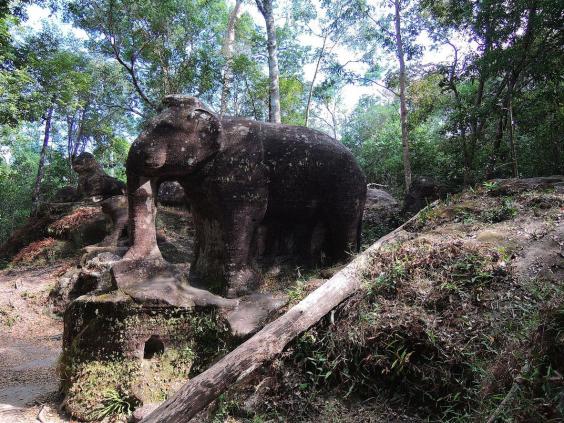Laser technology has been used by archaeologists in Cambodia to reveal multiple vast medieval cities buried under the tropical forest floor – some of them believed to be larger than the country’s capital Phnom Penh.
Researchers believe the metropolises are between 900 and 1,400 years old and lie not far from Angkor Wat, an ancient temple complex in north east Cambodia.
Dr Damian Evans, an Australian archaeologist funded by the EU, will publish these findings in the Journal of Archaeological Science on Monday, according to The Guardian.
Further investigation into these discoveries could result in groundbreaking developments in our understanding of south east Asian history, said Dr Evans.
“We have entire cities discovered beneath the forest that no one knew were there,” he said.
One of the cities whose existence has been revealed through analysis of data collected in a 2015 aerial study – the most extensive of its kind covering 734 square miles – is located at Preah Khan of Kompong Svay, an archaeological site about which, until now, relatively little has been known.
In a similar study in 2012, Dr Evans and his team uncovered part of the ‘lost city’ of Mahendraparvata on Phnom Kulen.
Now they have found evidence of an even bigger area which was once densely inhabited – and could form part of the largest empire on earth at the time, some experts have said.
“This time we got the whole deal and it’s big, the size of Phnom Penh big,” said Dr Evans.
“Our coverage of the post-Angkorian capitals also provides some fascinating new insights on the ‘collapse’ of Angkor.
“There’s an idea that somehow the Thais invaded and everyone fled down south – that didn’t happen, there are no cities [revealed by the aerial survey] that they fled to. It calls into question the whole notion of an Angkorian collapse."
Angkor Archaeological Park, a Unesco World Heritage Site, stretches over 400 square kilometres and is home to Angkor Wat, the largest religious monument in the world which appears on the Cambodian flag.
*****
Incredible


沒有留言:
張貼留言